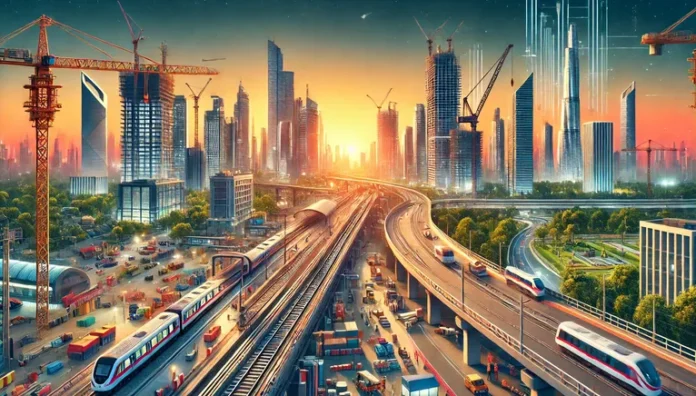As India strides into a new era of economic prominence, its infrastructure revolution is rapidly reshaping the landscape of global manufacturing. From modern highways to industrial corridors, from world-class ports to digital networks, the country’s transformation in physical and digital infrastructure is positioning it as a serious contender in global supply chains.
With global companies seeking alternatives to China, India is seizing the opportunity—not just to build and export, but to innovate and lead. A mix of strategic investment, policy reform, and private sector dynamism is propelling the world’s most populous country to the front lines of the 21st-century industrial economy.
Laying the Foundation: Roads, Rails, Ports, and Power
Over the past decade, India has undertaken one of the largest infrastructure expansions in the world:
-
Highways: Under the Bharatmala project, over 50,000 km of roads are being developed to connect manufacturing hubs to ports and markets.
-
Railways: Freight corridors and high-speed connectivity are reducing transit times and enabling just-in-time production.
-
Ports: The Sagarmala initiative is modernizing ports and integrating them with logistics parks and SEZs.
-
Power: The energy transition is supporting industries with a stable supply of electricity, including growing shares of renewable energy.
These physical assets are complemented by digital infrastructure—including high-speed 5G rollout, rural broadband, and the India Stack—which is enabling smart factories and digital supply chains.
From ‘Make in India’ to ‘Design in India’
The manufacturing sector is no longer just about low-cost assembly. With government initiatives like Make in India, PLI (Production Linked Incentives), and Startup India, the focus is shifting to value-added production and innovation.
Sectors seeing rapid growth include:
-
Electronics and semiconductors
-
Automobiles and electric vehicles
-
Defence manufacturing
-
Pharmaceuticals and biotech
-
Green hydrogen and renewable equipment
Multinational corporations are now setting up R&D centres, not just assembly lines, in India, seeing the country as a hub for innovation rather than just cost efficiency.
Logistics as a Competitive Edge
India has also made remarkable strides in logistics efficiency, which is central to manufacturing competitiveness. According to the World Bank’s Logistics Performance Index, India is steadily rising in the rankings due to:
-
Digitized customs and trade processes
-
Integrated multimodal logistics parks (MMLPs)
-
Drones and geospatial tech in supply chain monitoring
-
Unified logistics interface platforms (ULIP)
Improved logistics is reducing turnaround time, cost, and carbon emissions—making Indian manufacturing more attractive to global firms.
Global Investors Take Note
Foreign direct investment (FDI) into India’s manufacturing sector has seen record inflows in recent years. Global giants in electronics, automobiles, aerospace, and textiles are either expanding or entering India for the first time.
Recent examples include:
-
A major semiconductor fab by a global chipmaker in Gujarat
-
Expansion of EV production lines by global auto manufacturers in Tamil Nadu and Maharashtra
-
Drone and defence tech parks in Uttar Pradesh and Telangana
-
A new pharma hub in Andhra Pradesh with global partnerships
These developments are part of India’s ambition to increase manufacturing’s share in GDP from the current 17% to 25% in the coming years.
The Road Ahead: Skills, Speed, and Sustainability
While infrastructure has created the base, the next phase of India’s manufacturing leap will be driven by:
-
Skilled workforce development, aligned with Industry 4.0 needs
-
Sustainability mandates in industrial planning and energy use
-
Ease of doing business reforms, including faster land clearances and dispute resolution
-
Innovation ecosystems linking academia, startups, and enterprises
The government is also leveraging India’s G20 presidency legacy to position the country as a hub for responsible and resilient manufacturing.
India’s infrastructure revolution is not just about steel, cement, or silicon—it is about a strategic repositioning of the country in the global economic order. From building highways to creating innovation highways, India is transforming into a manufacturing powerhouse that can compete, collaborate, and lead on the world stage.
As the world looks to diversify supply chains and build resilient production networks, India’s bet on infrastructure-led growth and innovation-led manufacturing may turn out to be one of the defining shifts of the decade.



